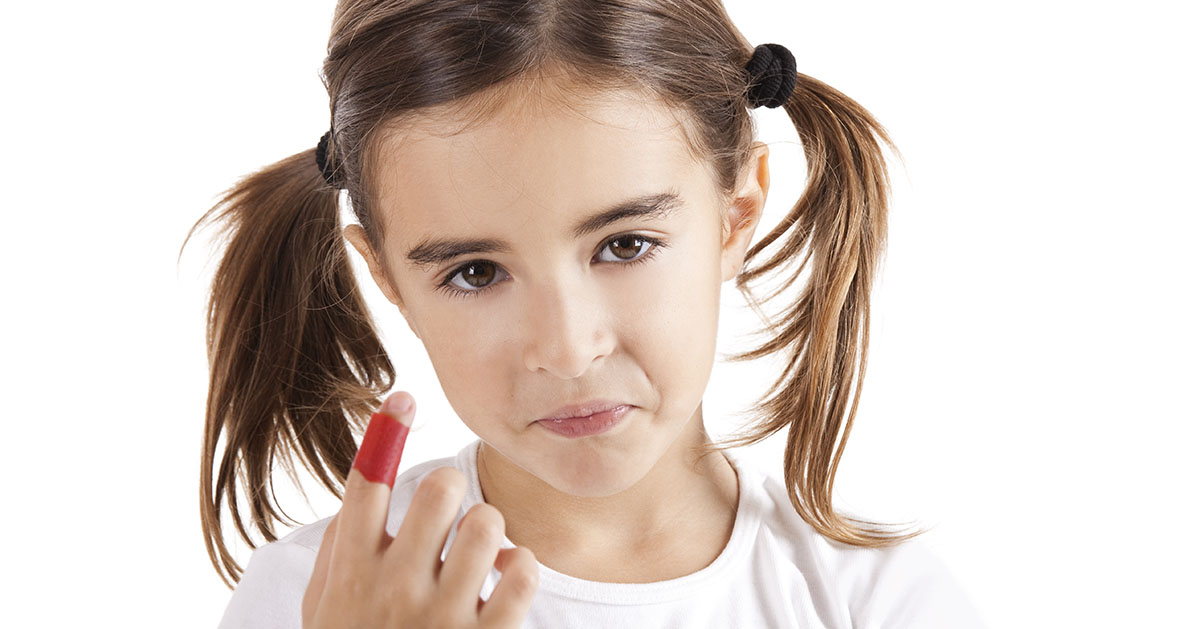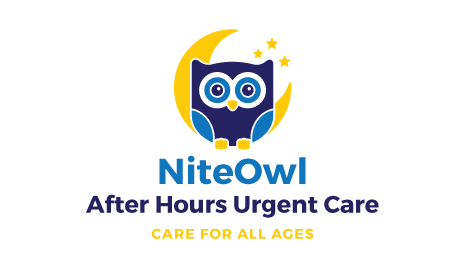It’s always good to know some basic first aid tips for parents so you can deal with the cuts, scrapes and stitches that seem to be a part of each summer as a kid. Get peace of mind knowing you can treat the minor stuff at home and rely on NiteOwl Pediatrics After Hours Urgent Care when you need our Chattanooga walk in clinic for more serious situations.
The First Aid Tips Every Parent Should Know
In most cases, you face the need to calm a child’s pain, ease anxiety, clean areas to prevent infection, and use ointments or a clean cloth or icepacks to ease swelling.
How to Treat a Child’s Insect Bite or Sting
Who doesn’t remember an unpleasant encounter with a wasp or bee while enjoying summer fun? Acting fast makes a big difference. If your child experiences trouble breathing or develops swollen lips or hives, you should seek emergency medical treatment. If you see the insect’s stinger, use a credit card or your fingernail to remove it without breaking it (avoid using tweezers because, although they may seem the perfect tool for removing a stinger, you will make it worse by squeezing out more venom). A cold compress can ease your child’s itching, along with applying calamine lotion or a topical antihistamine. If you suspect a tick bite, testing for Lyme disease may be wise.
 How to Treat a Child’s Cut or Scrape
How to Treat a Child’s Cut or Scrape
First, use a clean cloth to stop any bleeding, pressing down on the wounded area for three or more minutes. Clean the wound under lukewarm running water then pat gently until dried. Lather with soap if dirty. Aid faster healing by gently applying a thin layer of Neosporin antibiotic ointment. Cover with a bandage or gauze, using adhesive tape if needed. Change the bandage once or twice daily until healed. If it appears to drain pus or swell, it may be infected, which warrants followup by a doctor. If the bleeding won’t stop within 15 minutes of pressing firmly over the site with the clean cloth, seek medical care. If dealing with an animal bite causing a deep cut, your child needs to be seen by a doctor without delay.
How to Treat a Burns on a Child
If scalded by something hot, immediately hold the pained area under cool running water or use a cold, wet towel for relief. Take your child to the E.R. if it is a more severe burn. Don’t pop blisters, and apply antibiotic cream if the skin does break. Watch for signs of infection such as redness, tenderness, or swelling.
How to Remove a Splinter from a Child’s Skin
Exploring outdoor areas or sitting on bleachers at sporting events, your child may get a splinter of wood under his or her skin. Unlike the insect stinger, your recommended tool here is a pair of tweezers combined with rubbing alcohol. Use soap and water to make sure the affected area is clean. If you can’t completely remove the splinter yourself, see your doctor for safe removal.
How to Stop a Nosebleed
Your first instinct may be to have your child tilt his or her head back, but don’t. Simply have them sit upright and lean slightly forward while you pinch the lower end of the nose near the nostrils applying constant pressure for five to ten minutes. Releasing before then could prolong bleeding. If bleeding persists or the nosebleed results for a trauma, seek medical care. Swelling can be reduced by holding an ice pack against the bridge of the nose.
How to Treat Eye Pain in Kids
Getting accidentally poked in the eye by another child can result in severe pain. Hold a cool, wet cloth over the area. Hold the eyelid open, flushing with lukewarm water in the tub if needed to treat chemicals splashed in the eye. If the child complains about light sensitivity or blurry vision in addition to pain, consult a medical professional to check for any scratches on the eye’s surface or a deeper injury. Call Poison Control at 800-222-1222 if the eye reacts to chemicals.
How to Calm a Child After an Injury
We know very well how intense these experiences can be for young ones. Sometimes the child’s emotional reaction outweighs the actual injury. You can comfort your child by remaining calm, allowing him or her to feel in control by helping apply the ointment or bandaging, distracting with books or gadgets, and commenting after on how bravely they endured it. Make sure they know not to pick at scabs or scratch itchy areas, which can prolong the recovery process.
Apply First Aid to Ease Symptoms, then Followup with Your Doctor As Needed
These tips give you a reference for dealing with common summertime accidents, but you should monitor reactions and follow up to let your doctor know if your child fails to improve. In many cases, the “boo-boo” is all but forgotten within 48 hours.
How do you know when medical attention may be necessary? Here’s some helpful tips for making that judgment call. https://pmpediatrics.org/laceration-care/
Be Proactive and Put Together a First-Aid Kit for Home or the Car
Get ahead of accidents by preparing a well-stocked first aid kit at home and for on the go. Basics to include in any first aid kit include:
- Tweezers
- 1% hydrocortisone cream
- An oral antihistamine to treat any allergic reactions
- Acetaminophen or ibuprofen for pain and fever
- A non-glass, non-mercury Thermometer
- Hand sanitizer
- Instant cold compress
- A Blanket
- A triple-antibiotic ointment
- Bottled water to rinse wounds if needed
- Non-latex gloves
You can find some excellent first aid kits online from the Red Cross.
Know the Basics of First Aid for Reacting to Summer Injuries
This gives you the basics of first aid for your family. When accidents result in life threatening symptoms, rather than stopping at the basic at-home first aid care, we encourage you to call 911, take the child to your family doctor, visit the E.R., and/or consult with us at NiteOwl Pediatrics After Hours Urgent Care, where we can treat Chattanooga children for allergies, splints or sprains, rashes and skin irritation, animal bites, asthma-related issues, foreign object removal, burn treatment, and other services.
For more basic first aid tips for parents, visit:
5 First Aid Tips to Teach Kids
First Aid Tips Every Parent Should Know
Summer First Aid Tips for Parents
Baby First Aid: 10 Tips for New Parents
Copyright: iko / 123RF Stock Photo
All content on this Web site, including medical opinion and any other health-related information, is for informational purposes only and should not be considered to be a specific diagnosis or treatment plan for any individual situation. Use of this site and the information contained herein does not create a doctor-patient relationship. Always seek the direct advice of your own doctor in connection with any questions or issues you may have regarding your own health or the health of others.
